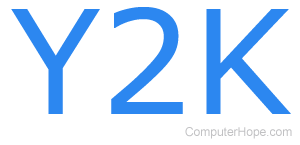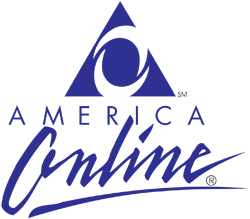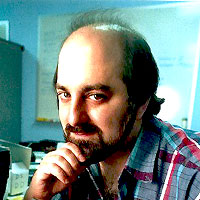Computer history - 2000
Major computer events in 2000

Computers continue to work, and the world doesn't come to an end on January 1, 2000, as some feared might happen because of the year 2000 bug.
On March 10, 2000, NASDAQ hit its record high and marked the turning point of the dot-com boom.
For the first time, more than half of the households in America had Internet access on August 17, 2000, according to Nielsen.
2000 computer and technology top terms
The following are some top computer and technology-related terms in alphabetical order that were introduced or popularized during 2000.
New computer products and services introduced in 2000
Bill Gates announced at CES (Consumer Electronics Show) that Windows CE was now known as Pocket PC (personal computer) on January 4, 2000.
Linus Torvalds released version 2.4 of the Linux kernel source code on January 4, 2001.
XHTML (extensible hypertext markup language) was released on January 26, 2000.
EA (Electronic Arts) released The Sims, the best-selling PC game in history on February 4, 2000.
CNR (communication and network riser) was introduced by Intel on February 7, 2000.
Microsoft Windows 2000 was released on February 17, 2000.
Red Hat released the first version of Red Hat Enterprise Linux on February 22, 2000.
IBM announced in March the NetVista brand of new personal computing devices.
Perl 5.6 was released on March 22, 2000.
Sony released the PS2 on March 4, 2000.
Microsoft Pocket PC 2000 was introduced on April 19, 2000.
ATI introduced its Radeon product line on April 24, 2000.
Intel introduced the ATX (advanced technology extended) 2.03 revision in May 2000.
AMD released the Duron processor on June 19, 2000, with speeds of 600 MHz to 1.8 GHz and bus speeds of 200 MHz to 266 MHz. The Duron was built on the same K7 architecture as the Athlon processor.
Microsoft released Windows Me on June 19, 2000.
Deus Ex was released on June 26, 2000 by Eidos Interactive. Despite a few game flaws, the game ranks highly on many game lists, including Top 25 PC Games of All Time and 100 Greatest Games of All Time. It also ranks #1 on PC Gamer's 100 Best PC Games in February 2011. Over one million copies of the game were sold worldwide by April 23, 2009.
Blizzard released Diablo II on June 29, 2000.
Microsoft introduced C# to the public in June 2000.
Sony released the PS One on July 7, 2000.
SQLite was released on August 17, 2000 by its developer, D. Richard Hipp.
Adobe Photoshop 6.0 was released in September 2000.
Apache released Subversion, an open-source version control system on October 20, 2000.
Intel introduced the short-lived Socket 423 in November 2000.
Counter-Strike was released on November 8, 2000.
Microsoft released DirectX 8, November 9, 2000.
The Intel Pentium 4 central processing unit architecture (code-named "Willamette") was released on November 20, 2000.
Intel also introduced its NetBurst microarchitecture on November 20, 2000.
M-Systems announced the USB (universal serial bus) flash drives in September 2000 and were first sold to the public in December 2000 by IBM with a capability of 8 MB.
IBM introduced the IBM eServer, a new generation of servers.
Kondara Linux was released in 2000.
OpenOffice.org was introduced as an open office productivity suite in 2000.
Brute Force game was released in 2000.
The programming language DarkBASIC was introduced in 2000.
Microsoft introduced Visio in 2000.
Microsoft released Excel 2000 for the PC and Mac in 2000.
Microsoft released Word 2001 for Mac in 2000.
Seagate introduced a 15,000 RPM (revolutions per minute) hard drive in 2000.
Dell released the XPS B series in 2000.
Computer and technology-related events in 2000
A glitch in a computer in the Washington D.C. air traffic control caused a shutdown of air traffic across the U.S. East Coast on January 6, 2000.
Kevin Mitnick was released from prison on January 21, 2000.
The Children's Online Privacy Protection Act became effective on April 21, 2000.
Young Filipino students released the ILOVEYOU e-mail virus that began infecting computers and spreading over the Internet starting on May 4, 2000. The virus became one of the most costly viruses ever, estimated causing over $10 billion in damage because of the steps involved in cleaning a computer after it was infected.
The resume virus was announced to be wild on Friday, May 26, 2000.
On June 24, 2000, U.S. President Bill Clinton made the first ever Presidential webcast. In it, he announced a USA.gov that citizens can use to search all government resources.
The video 405 was released in June 2000. The video was widely considered to be the first viral video.
Internet Explorer 5.5 was released in July 2000.
The Nokia 3310 mobile phone was announced on September 1, 2000.
Steve Wozniak was inducted into the National Inventors Hall of Fame in September 2000.
Google launched Google AdWords with 350 customers in October 2000.
AGP (accelerated graphics port) 3.0 aka AGP 8x was introduced in November 2000.
Bill Shepherd, Yuri Gidzenko, and Sergei Krikalev became the first to enter the International Space Station on November 2, 2000.
ATA-5 standard was approved by ANSI (American National Standards Institute) on December 13, 2000, under document NCITS 340-2000.
On December 22, 2000, the site egghead.com announced it was hacked and that around 3.5 million customers credit cards were exposed.
In December 2000, HP (Hewlett-Packard) celebrated the shipment of the 50 millionth LaserJet printer.
U.S. Judge Thomas Penfield announced after over two years in the court that Microsoft be split into two companies, although it would remain intact until the appeals process was exhausted.
Both Intel and AMD pass the 1 GHz CPU barrier, something many people in the computer industry thought would never happen.
The London Science Museum completed the difference engine No 2 printing mechanism in 2000.
Professor Paul Blenkhorn invented Microsoft Narrator.
Jack Kilby was awarded the Nobel Prize in Physics in 2000.
The JPEG 2000 wavelet compression codec standard was defined by the Joint Photographic Experts Group.
In 2000, an improvement over FireWire 400 (IEEE-1394a), adding support for asynchronous streaming, packet concatenation, and a suspend mode for reduced power consumption.
Google announced it had indexed over one billion pages, making it the Internet's largest search engine.
The Low-Level Virtual Machine project began in 2000.
The last machine to run Multics was decommissioned in 2000.
Computer companies and organizations founded in 2000
Asiliant Technologies was founded in January 2000.
Baidu was incorporated in January 2000.
Boost Mobile was founded in 2000.
DeviantArt came online in 2000 for sharing original artwork.
The non-profit organization Free Geek was founded by Oso Martin in 2000.
The non-profit Geekcorps organization that was started in 2000 by Ethan Zuckerman and Elisa Korentayer.
Kaseya was founded in 2000.
Sunbeamtech was founded in 2000.
Computer company events in 2000

AOL (America Online) announced it had acquired Time Warner for $164 billion in stock and became AOL Time Warner on January 10, 2000.
Microsoft Bill Gates relinquished his title as CEO to Microsoft President Steve Ballmer on January 13, 2000.
ScanSoft acquired Caere Corp. on January 17, 2000.
On February 28, 2000, Quintus Corporation and Mustang.com announced that Quintus had agreed to acquire Mustang.com in a stock merger valued at approximately $290 million.
VeriSign agreed to acquire Network Solutions for $21 billion on March 7, 2000.
Efficient Networks, Inc. acquired NetScreen Technologies, Inc. for a $905 million stock transaction on March 28, 2000.
The SGI Cray research business unit was sold to Tera Computer company in March 2000.
Paradise Systems officially went out of business in March 2000.
Verizon was formed on April 4, 2000.
On April 11, 2000, S3 Incorporated announced it had signed into agreement to transfer its graphics business to a newly established joint venture with VIA Technologies, Inc.
On June 19, 2000, Microsoft Corporation announced it had bought Bungie Software Products Corporation for undisclosed terms. The move allowed Microsoft to release the highly anticipated game Halo for its upcoming Xbox.
Indeo was acquired from Intel by Ligos Technology on June 27, 2000.
Sierra became part of Vivendi Universal in June 2000.
Number Nine filed for bankruptcy on July 1, 2000, and no longer supports any products regardless of warranty status.
NEC and Mitsubishi launched a new display monitor company on June 30, 2000, known as NEC/Mitsubishi.
Caldera International announced its agreement to acquire SCO's server software and professional services divisions on August 2, 2000.
Fountain Technologies, which handles Quantex and CyberMax PC sales and support, filed for US Chapter 11 bankruptcy on August 17, 2000.
AT&T announced in October it would restructure over the next two years into a family of separate publicly held companies: AT&T Wireless, AT&T Broadband, and AT&T.
On November 1, 2000, S3 Incorporated and Diamond announced a name change to SONICblue.
On December 15, 2000, NVIDIA Corporation announced it would acquire certain related assets of 3Dfx interactive.
WebMediaBrands acquired EarthWeb for an undisclosed amount on December 26, 2000.
Mattel sold The Learning Company to Gores Technology group for $3.6 billion in 2000.
BSDi (Berkeley Software Design, Inc.) merged with Walnut Creek CDROM in 2000.
EONtronics went out of business in 2000.
Integrated Micro Solutions went out of business in 2000.
Namecheap was founded in 2000.
Overland Data acquired Tecmar in 2000.
Red Hat purchased Cygwin in 2000.
SBC (Southwestern Bell Corporation) acquired Prodigy in 2000.
Segasoft was re-structured into Sega.com in 2000.
Serverworks was founded in 2000.
Silicom Multimedia went out of business in 2000.
SystemSoft's portfolio of Windows Utilities software solutions were acquired by Rocket Software in 2000.
TurboSquid was founded in 2000 by Tom and David Avgikos and Matt and Andy Wisdom.
Zoom Telephonics, Inc. acquired the Boca Research brand and trademark rights in 2000.
Internet domains that came online in 2000
The domain twitter.com came online on January 21, 2000.
The domain blogspot.com came online on July 31, 2000.
Computer-related TV shows and movies released in 2000
Track Down (Takedown outside the USA) was released on March 15, 2000.
Computer pioneer deaths in 2000

Phillip Katz passed away on April 14, 2000 (Age: 37).
Donald Davies passed away on May 28, 2000 (Age: 76).
Leo Fantl passed away on November 11, 2000 (Age: 76).
Michael Muuss passed away on November 20, 2000 (Age: 42).
